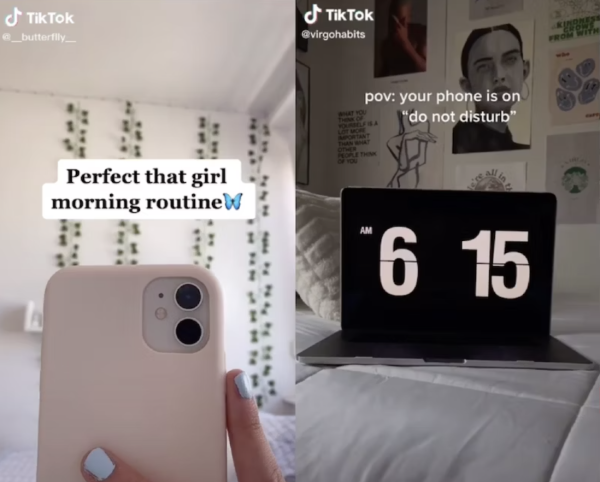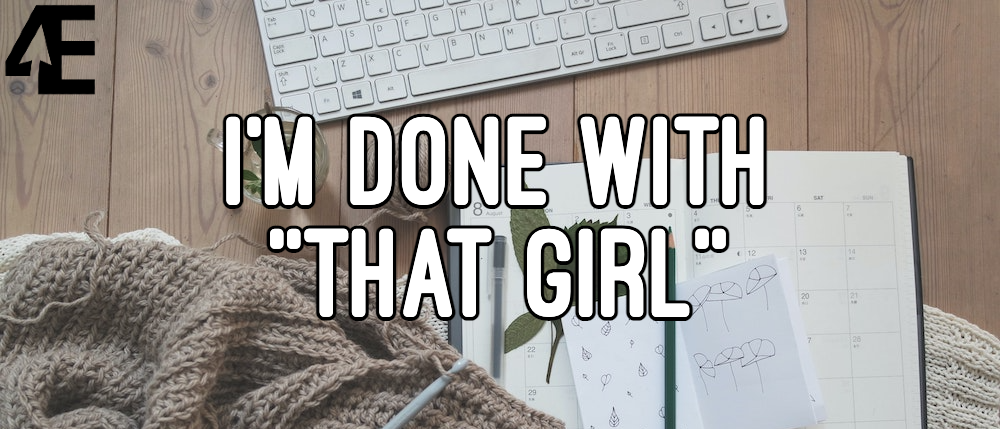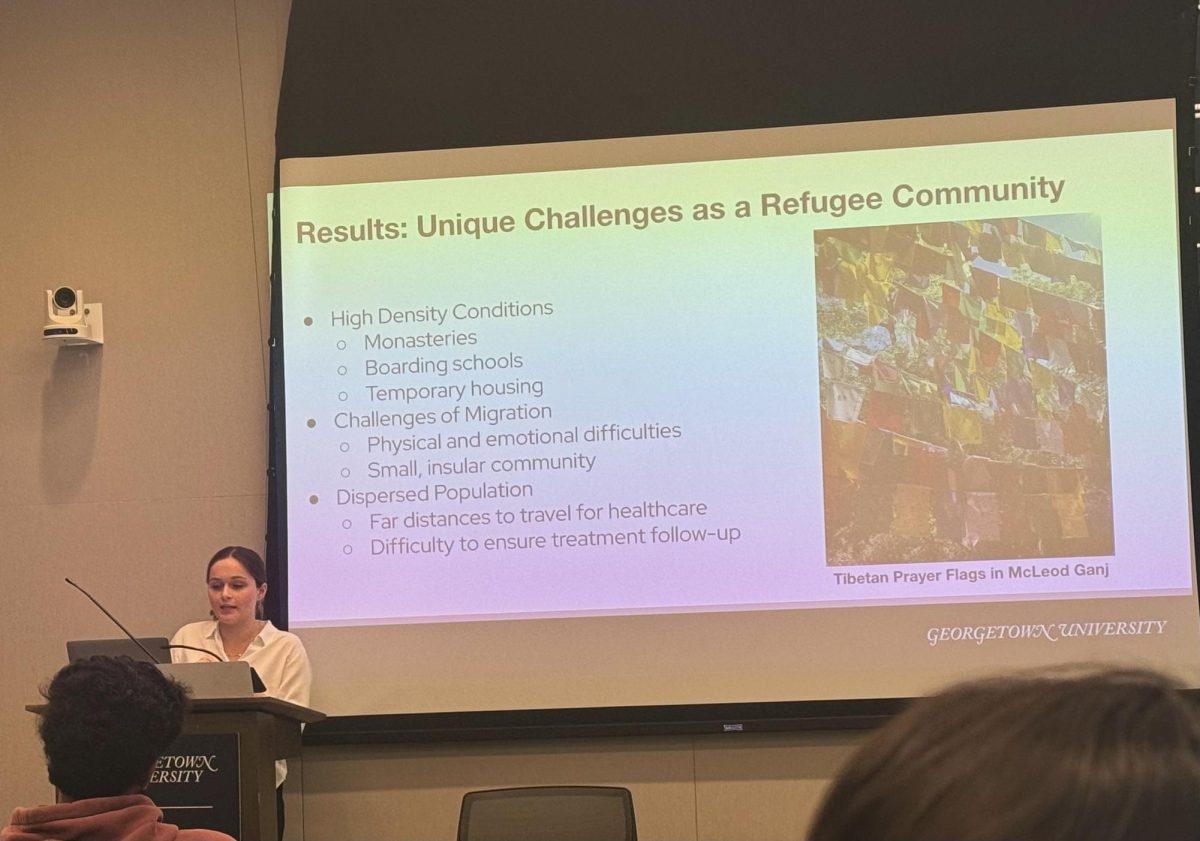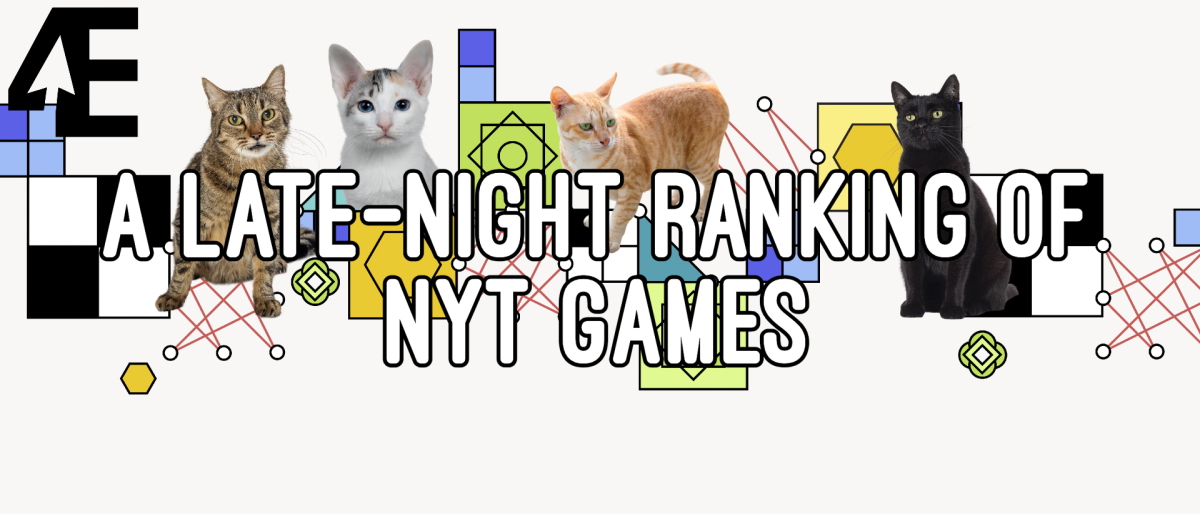She awakens as the sun rises. She starts her day with her seven-step skincare routine, green smoothie and silent meditation. She strolls out the door for her morning Soulcycle session sporting her silky Alo set and spotless Hoka sneakers. She has her life so perfectly put together. She’s That Girl.

That Girl is one of TikTok’s most viral wellness crazes. Under the hashtag #ThatGirl, which has amassed over 21.8 billion views since its creation in January 2020, one’s screen becomes filled with a sea of thin, attractive women journaling, doing yoga and being their healthiest, most organized best selves. By documenting their morning routines, aesthetic living spaces and productive work days, TikTok influencers aim to inspire other women to prioritize their mental, physical and professional health.

Influencers championing the That Girl trend claim it promotes self-care and self-improvement. As great as it looks on screen, in reality, the That Girl obsession is unrealistic because it fosters a culture of materialism and imposes unrealistic standards on impressionable young women.
Being That Girl comes with a price tag. The cost? Matching name-brand workout sets, luxury skincare products and gold jewelry galore. These products have become so closely intertwined with the That Girl videos that it seems one must own these luxury goods to participate in this trend that’s meant to promote health and self-confidence, and an active lifestyle … the problem is, most people can’t participate in this trend. The inability to afford a hundred-dollar workout set doesn’t reflect one’s productivity or fulfillment. Yet, somehow, it excludes one from being That Girl.
And there’s another requirement for being That Girl that no amount of money can buy. Scroll through the #ThatGirl tags for no more than a minute, and you’ll discover that she has a very specific look. A thin frame, clear skin and smooth hair, almost never a person of color. The issue isn’t that this version of That Girl exists. It’s that this is the only version of her that exists. As a result, girls who don’t fit the prototypical That Girl model can feel shunned from this supposedly uplifting self-improvement community. But shouldn’t we be relieved that there’s finally a social media trend encouraging healthy habits? While I agree that the behaviors That Girl promotes are healthy, the lifestyle she promotes isn’t. And how would I know? I was obsessed with becoming her.
That Girl never ate junk food, so I never ate junk food. That Girl never woke up past 5 a.m., so I never woke up past 5 a.m. That Girl never dared stray from her routine, so I never dared stray from mine. I refused to go out for ice cream with friends because I didn’t want to ruin my “perfect” eating habits. I refused to go out late because I didn’t want to compromise my “perfect” morning routine. I severely underestimated the expenses when I bought into the That Girl trend. My “self-improvement journey” hadn’t just cost me my paycheck, it had cost me my life.
So I put down my foot and put down my phone. I stopped trying to be That Girl and instead started to become someone else. Let me introduce you to her. She awakens after six alarm snoozes. She starts her day with a green smoothie (and a bagel or two), which she spills on her shirt as she storms out the door for her Sunday stroll. She returns, a smile strewn across her sunkissed, sweaty face. She’s not perfect, but she’s happy. And how would I know? She’s This Girl.









